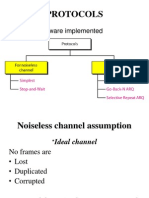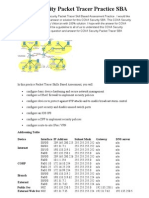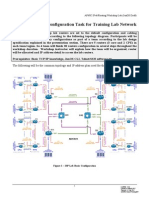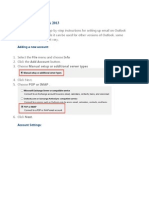0% found this document useful (0 votes)
23 views3 pagesSimplex StopAndWait Protocol Documentation
The document outlines the implementation of the Simplex Stop-and-Wait protocol for noisy channels using Python socket programming. It describes the protocol's operation, including sending frames, waiting for acknowledgments, and handling errors through retransmissions. Additionally, it provides execution steps, code explanations, and potential enhancements for the protocol.
Uploaded by
24ftvphde84Copyright
© © All Rights Reserved
We take content rights seriously. If you suspect this is your content, claim it here.
Available Formats
Download as PDF, TXT or read online on Scribd
0% found this document useful (0 votes)
23 views3 pagesSimplex StopAndWait Protocol Documentation
The document outlines the implementation of the Simplex Stop-and-Wait protocol for noisy channels using Python socket programming. It describes the protocol's operation, including sending frames, waiting for acknowledgments, and handling errors through retransmissions. Additionally, it provides execution steps, code explanations, and potential enhancements for the protocol.
Uploaded by
24ftvphde84Copyright
© © All Rights Reserved
We take content rights seriously. If you suspect this is your content, claim it here.
Available Formats
Download as PDF, TXT or read online on Scribd
/ 3























































































